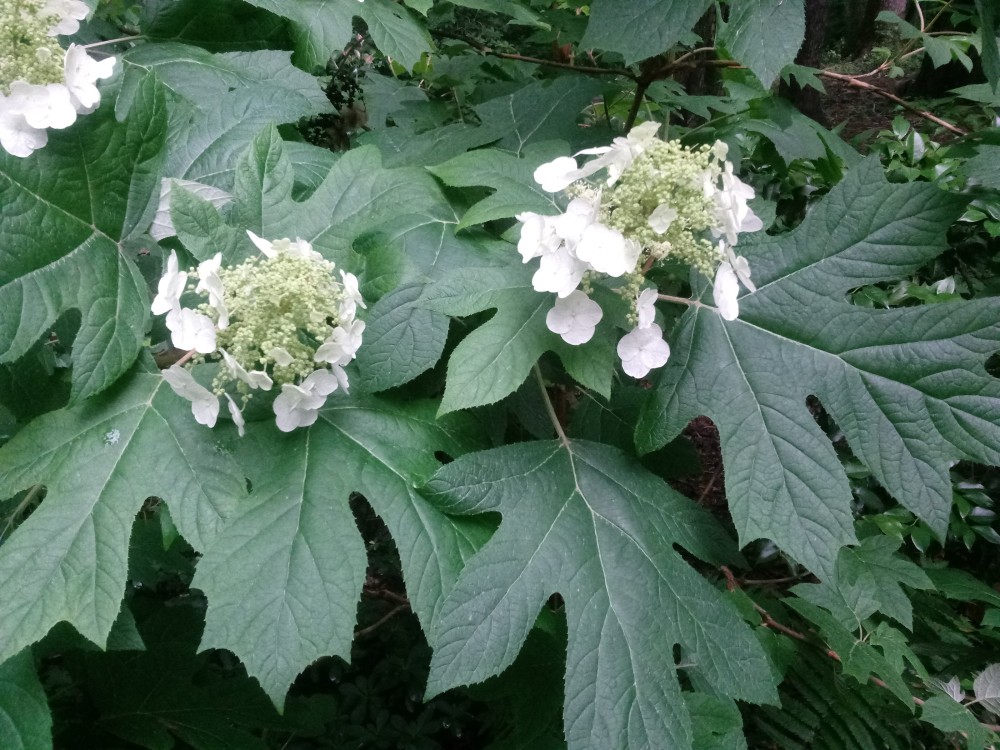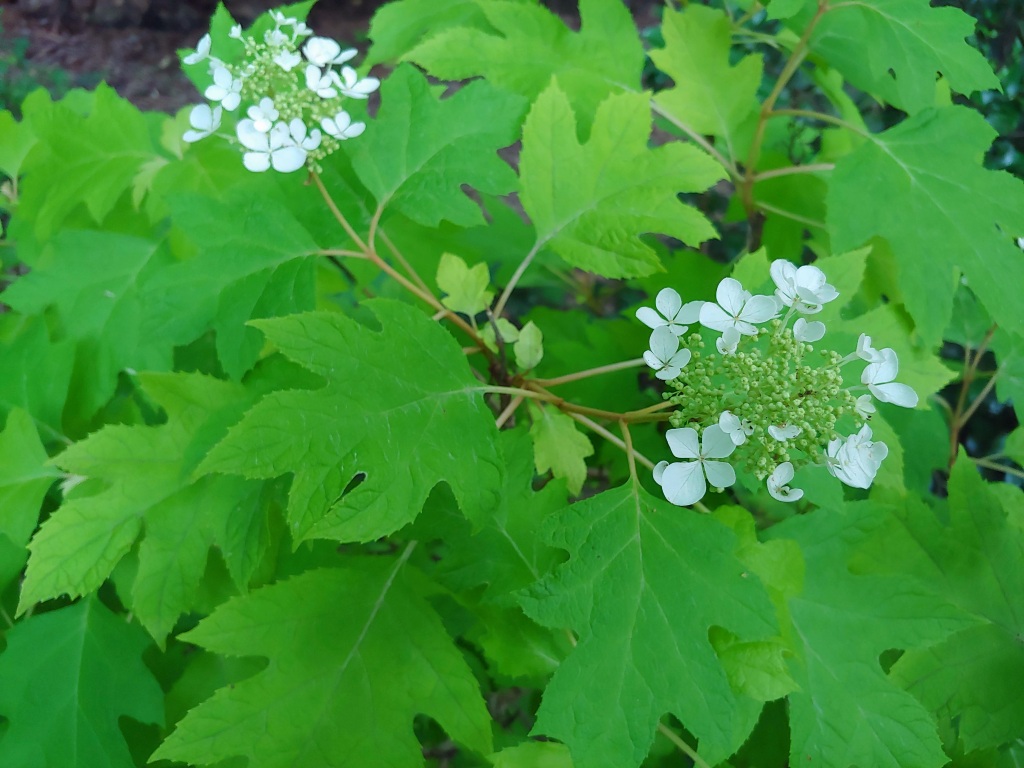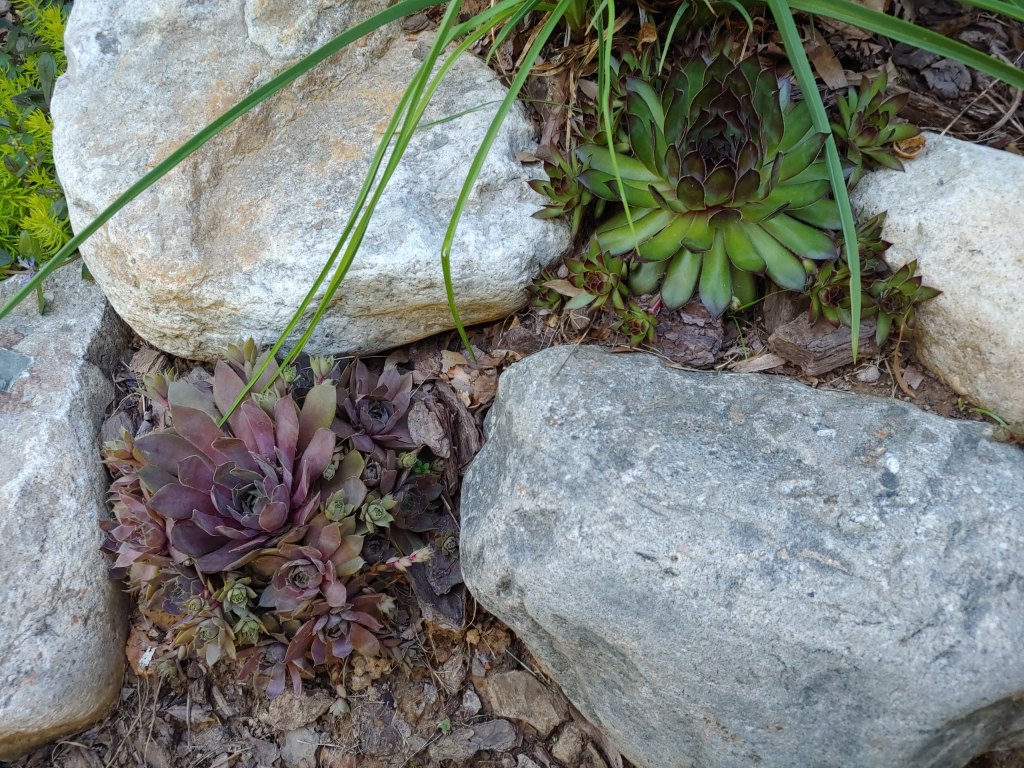No doubt, readers anxiously await the newest plant collection, or the latest harebrained scheme to be started in this garden. Here he goes again, you say. Admittedly, I am prone to jumping in with both feet when something catches my eye, and yes, here I go again.


I see that parts along the edges of the garden drift into nothing. In some areas native spicebush (Lindera benzoin) makes a proper ending point, but in others the garden just stops. Here, a shrub should transition the garden into the forest, stopping the eye from drifting past its borders. And, what better shrub for this than Oakleaf hydrangea (Hydrangea quercifolia, above and below)? Already, there are six or eight Oakleafs (maybe ten) scattered about, and while several are long forgotten cultivars with no distinctive identifying features, it seems worthwhile to add one each of a handful of compact growers, some with blooms that fade to pink, though that’s seems hardly different than a few of the garden’s old timers.

I am pleased that the yellow leafed Oakleaf, ‘Little Honey’ (above), was successfully moved from the partially sunny side of the garden to the shaded side, and I suppose this is what started the idea to add more. The transplant was successful, but the reason the hydrangea was moved was because its leaves were spotted and faded in a bit too much sun. It looked sickly, and the change remedied this problem, though still I’m not overly impressed with the foliage or the smaller blooms. But, it’s clearly different than the other green leafed, sprawling Oakleaf hydrangeas, and by way of adding and identifying newcomers I’ll be able to evaluate differences and to see if one or the other performs best. This curiosity is at the root of collecting, and in a garden with limited space adding the hydrangeas along the outside edges also serves a design purpose. It is unusual that I am so practical.

While I consider excavating a portion of the upper rear lawn so that granite boulders can be stacked to create crevices, the project is pushed by recent plantings of assorted Sempervivums (Hen’s and Chicks, above). I had never given much thought that there could be dozens of cultivars commonly available, but once I planted a few the door opened. While the hydrangeas will be more costly, even while I’m able to purchase leftovers at the season’s end, the small sempervivums are a few dollars each. And, there are dozens, some quite distinctive and others that are not. While these do not make a stand alone garden, it’s obvious I can’t get enough boulders, and the succulents complement them nicely, so why not? And, what’s next? We’ll see next week.
Dave….do you have your several hydrangeas behind wire, or sprayed with Bobex and Liquid Fence, or both? Short of a baseball bat, we’ve found it almost impossible to keep deer from destroying ours.
I spray the hydrangeas with Bobbex. I noticed yesterday that one that is partially hidden had leaves that had been chewed. I’m sure I missed it.
Actually, it is not as crazy as some of what is out there. Many of us are too eager to try new ‘improved’ cultivars. Oakleaf hydrangeas and other hydrangeas do not seem so far fetched, even if they are new cultivars. Well, perhaps ‘Little Honey’ is a bit too new.